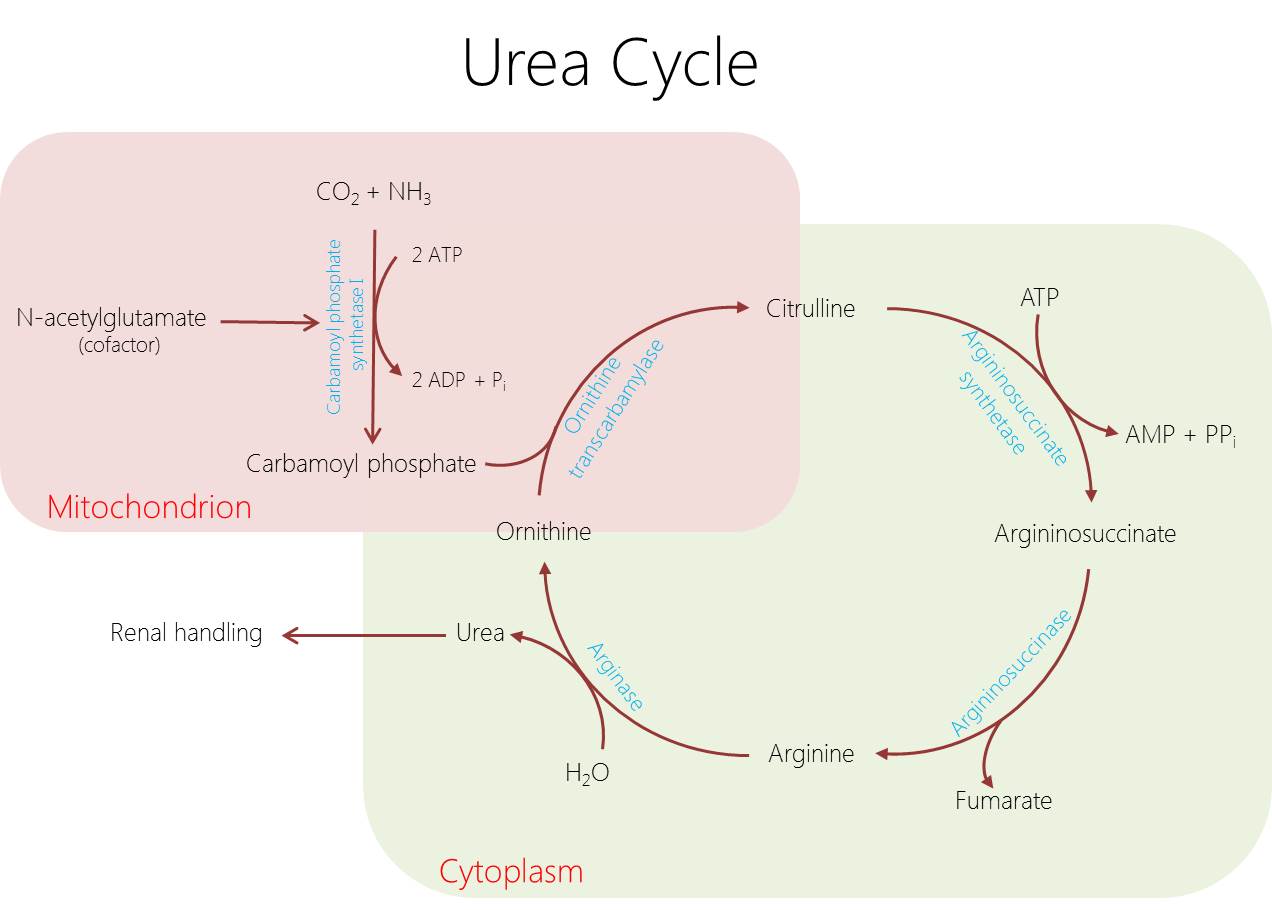WBR0972
| Author | [[PageAuthor::Rim Halaby, M.D. [1] (Reviewed by Yazan Daaboul, M.D.)]] |
|---|---|
| Exam Type | ExamType::USMLE Step 1 |
| Main Category | MainCategory::Biochemistry |
| Sub Category | SubCategory::General Principles |
| Prompt | [[Prompt::A newborn baby who was normal at birth is noted to be lethargic, hypothermic and feeding poorly at his first days of life. The nurse witnesses an episode of seizure following which blood laboratory tests are ordered. An elevated level of ammonia is detected. Subsequent studies reveals deficiency in N acetylglutamate synthase. N-acetylglutamate is recognized as the regulator of the rate-limiting step of the urea cycle, and its absence leads to abnormalities in urea production and elevated ammonia levels.
Shown below is a diagram depicting the different steps of the urea cycle occurring in the mitochondria and cytoplasm of hepatocytes. Which of the following reactions is the rate-limiting step of the urea cycle? |
| Answer A | AnswerA::A |
| Answer A Explanation | AnswerAExp::A corresponds to the enzyme carbamoyl phosphate synthetase I, which is the rate-limitng step of the urea cycle. Carbamoyl phosphate synthetase I activation requires ATP and the cofactor N-acetylglutamate. |
| Answer B | AnswerB::B |
| Answer B Explanation | [[AnswerBExp::B corresponds to ornithine transcarbamylase, which catalyzes the reaction that produces citrulline.]] |
| Answer C | AnswerC::C |
| Answer C Explanation | AnswerCExp::C corresponds to argininosuccinate synthetase, which is an ATP-requiring enzyme that catalyzes the reaction that produces argininosuccinate. |
| Answer D | AnswerD::D |
| Answer D Explanation | AnswerDExp::D corresponds to arginosuccinase, which catalyzes the reaction that produces arginine and fumarate. |
| Answer E | AnswerE::E |
| Answer E Explanation | [[AnswerEExp::E corresponds to arginase, which catalyzes the reaction that produces ornithine.]] |
| Right Answer | RightAnswer::A |
| Explanation | [[Explanation::The urea cycle involves a set of 5 hepatic enzymes that collectively convert ammonia into urea. Two of the reactions involved in urea synthesis occur within the mitochondria, whereas the remaining reactions occur in the cytoplasm.
The rate limiting step in the urea cycle is the reaction catalyzed by mitochondrial enzyme carbamoyl phosphate synthetase I that produces carbamoyl phosphate from carbon dioxide and ammonia. is the conversion of ammonia and carbon dioxide into carbamoyl phosphate. The enzyme of this rate limiting step requires ATP and the cofactor N-acetylglutamate. N-acetylglutamate synthetase deficiency in this newborn results in a reduced activation of carbamoyl phosphate synthetase I enzyme and consequently, a reduced concentration of carbamoyl phosphate. Shown below is an illustration of the reactions of the urea cycle, all of which occur in hepatocytes in the liver |
| Approved | Approved::No |
| Keyword | WBRKeyword::Urea cycle, WBRKeyword::Carbamoyl phosphate synthetase I, WBRKeyword::N acetylglutamate, WBRKeyword::Urea synthesis, WBRKeyword::Ammonia, WBRKeyword::Rate limiting step, WBRKeyword::Reaction, WBRKeyword::Enzyme |
| Linked Question | Linked:: |
| Order in Linked Questions | LinkedOrder:: |
